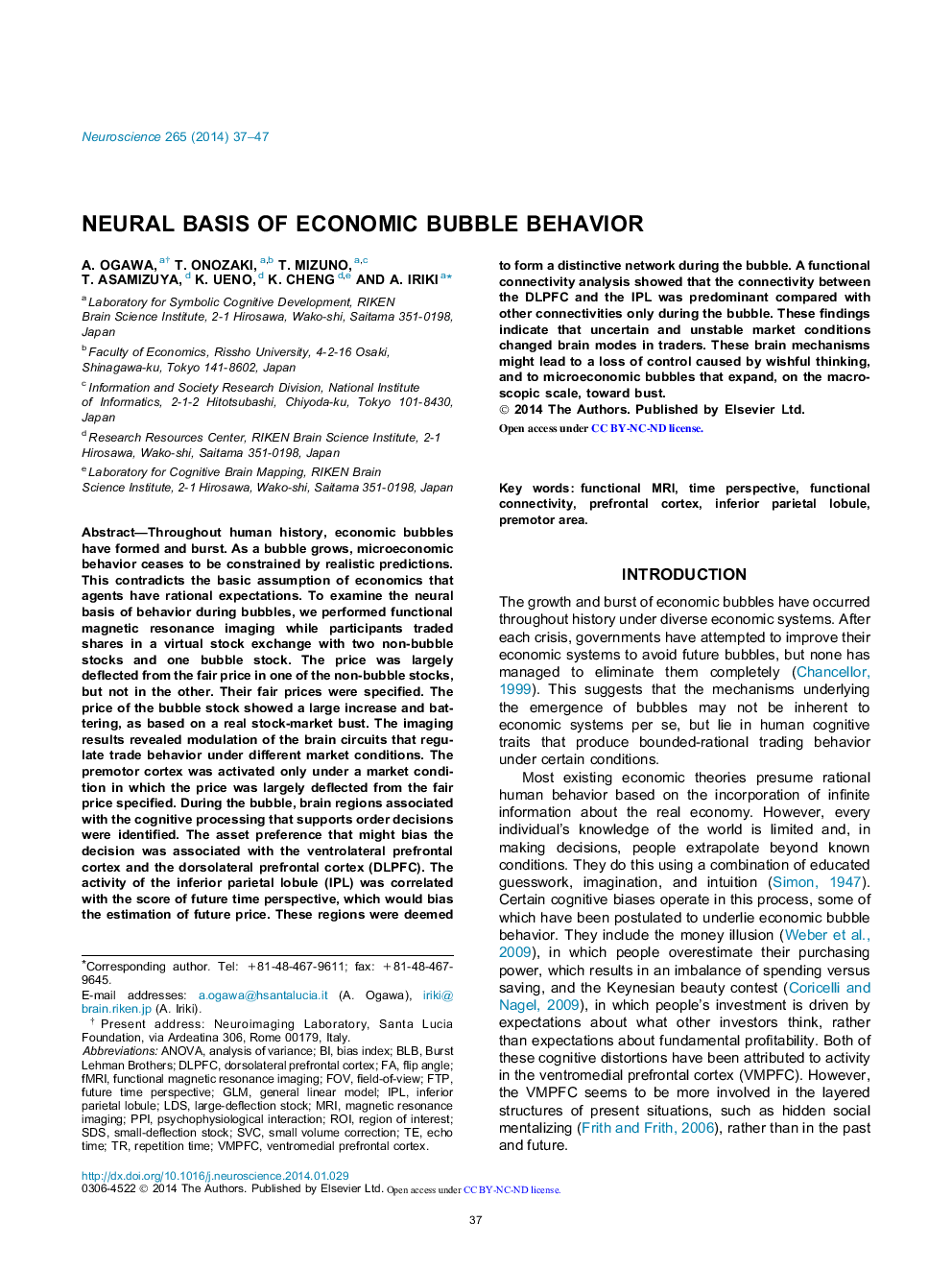| کد مقاله | کد نشریه | سال انتشار | مقاله انگلیسی | نسخه تمام متن |
|---|---|---|---|---|
| 6273998 | 1614811 | 2014 | 11 صفحه PDF | دانلود رایگان |
- VMPFC might be involved in the asset preference.
- IPL was associated with the score of future time perspective.
- Uncertain and unstable market conditions may trigger a changed brain mode in traders.
- DLPFC and IPL might form a network predominant during the bubble.
- Premotor area was associated with a trade strategy in the stable market state.
Throughout human history, economic bubbles have formed and burst. As a bubble grows, microeconomic behavior ceases to be constrained by realistic predictions. This contradicts the basic assumption of economics that agents have rational expectations. To examine the neural basis of behavior during bubbles, we performed functional magnetic resonance imaging while participants traded shares in a virtual stock exchange with two non-bubble stocks and one bubble stock. The price was largely deflected from the fair price in one of the non-bubble stocks, but not in the other. Their fair prices were specified. The price of the bubble stock showed a large increase and battering, as based on a real stock-market bust. The imaging results revealed modulation of the brain circuits that regulate trade behavior under different market conditions. The premotor cortex was activated only under a market condition in which the price was largely deflected from the fair price specified. During the bubble, brain regions associated with the cognitive processing that supports order decisions were identified. The asset preference that might bias the decision was associated with the ventrolateral prefrontal cortex and the dorsolateral prefrontal cortex (DLPFC). The activity of the inferior parietal lobule (IPL) was correlated with the score of future time perspective, which would bias the estimation of future price. These regions were deemed to form a distinctive network during the bubble. A functional connectivity analysis showed that the connectivity between the DLPFC and the IPL was predominant compared with other connectivities only during the bubble. These findings indicate that uncertain and unstable market conditions changed brain modes in traders. These brain mechanisms might lead to a loss of control caused by wishful thinking, and to microeconomic bubbles that expand, on the macroscopic scale, toward bust.
Journal: Neuroscience - Volume 265, 18 April 2014, Pages 37-47
